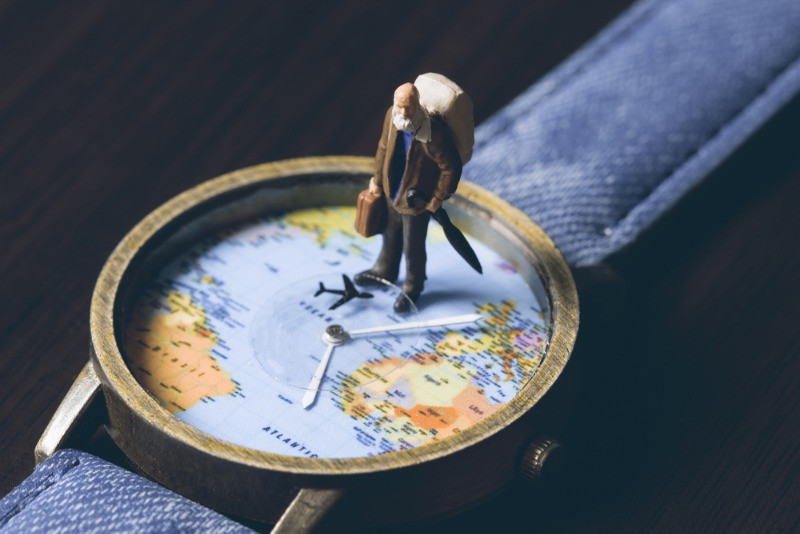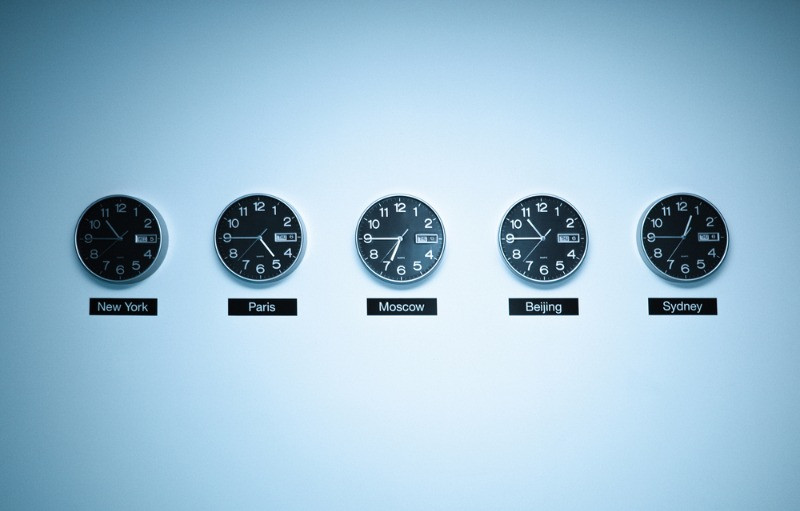Iceland uses standard GMT as the time zone they are in. If you want to compare your own time zone and know what time is it in Iceland, here is an interesting website for doing that easily.
Iceland time zone
Time zone might be important depending on the country you come from. Jet lag may be more severe and it may affect your everyday activities. Besides that, more important to the time zone is what you want to do and see while in Iceland.
As an example, if you want to rent a car in Iceland to go Northern Light or Aurora Borealis hunting, then the time of year is more important than the time zone. During the winter months, you have a lot fewer hours of daylight, so this increase the opportunity to see the Aurora Borealis. On the other hand, if you want to trek the country and visit the hot springs and see the geysers, then you will want to visit the country when you have a lot more daylight hours available to you for your adventures.
Later in this post, we have a breakdown of the average amount of daylight hours available to you each month and also the average temperature ranges. These can be very helpful to you when planning your trip and what is the best time of year for you to visit Iceland.
Iceland daylight saving time
What is a daylight-saving time, you'll wonder? Sunrise and sunset hours vary per the season. you certainly know that it gets darker sooner throughout the coldest months. On the opposite hand, the days are brighter and longer when the summer sets in. Not every country around the world has completely different seasons. Countries near the equator only have two seasons, a dry and a rainy one.
For those countries that do have four seasons, daylight-saving time could also be observed. it's a time modification applied twice a year: in summer and in winter. As such, in some countries of the globe, there are two completely different schedules that are followed at different times of the year: in summer, we move the clock forward one hour. In the winter, we fall back one hour.

This method is adopted by numerous countries of the globe so as to extend for energy-saving purposes. By using this system, governments attempt to adapt the cycle of daylight to everyday human activities (sports, work, distraction, commerce, driving, etc.), so as to rely less on electricity.
Iceland does not use Daylight Savings Time (DST). This can make it a bit easier for you when planning your trip and daily events as you don’t have to take time conversions into account when planning into the future.
Here is a brief breakdown of what you can expect month by month:
JANUARY
- Hours of Daylight: 4.5 – 7
- Average Low: -3ºC/27ºF
- Average High: 2ºC/35º
FEBRUARY
- Hours of Daylight: 7 – 10
- Average Low: -2ºC/28ºF
- Average High: 3ºC/37º
MARCH
- Hours of Daylight: 10 – 13.5hrs
- Average Low: -2ºC/28ºF
- Average High: 3ºC/38º
APRIL
- Hours of Daylight: 13.5 – 16.75hrs
- Average Low: 0.5ºC/33ºF
- Average High: 5.5ºC/42º
MAY
- Hours of Daylight: 16.75 – 20hrs
- Average Low: 3.5ºC/39ºF
- Average High: 9.5ºC/49º
JUNE
- Hours of Daylight: 20 – 21hrs
- Average Low: 7ºC/44ºF
- Average High: 12ºC/53º
JULY
- Hours of Daylight: 21 – 18hrs
- Average Low: 8ºC/47ºF
- Average High: 13ºC/56º
AUGUST
- Hours of Daylight: 18 – 14.5hrs
- Average Low: 8ºC/47ºF
- Average High: 13ºC/56º
SEPTEMBER
- Hours of Daylight: 14.5 – 11.5hrs
- Average Low: 5ºC/41ºF
- Average High: 10ºC/50º
OCTOBER
- Hours of Daylight: 11.5 – 8hrs
- Average Low: 2ºC/36ºF
- Average High: 7ºC/45º
NOVEMBER
- Hours of Daylight: 8 – 5hrs
- Average Low: -1.5ºC/29ºF
- Average High: 3.5ºC/38º
DECEMBER
- Hours of Daylight: 5 – 4.5
- Average Low: -3ºC/27ºF
- Average High: 2ºC/35ºF< /li>
So when is the best time to visit Iceland?
If you have your heart set on viewing the Aurora Borealis, then this will move you into the late Fall to the early Winter months with the heart of Winter being your best opportunity to see longer periods of this natural light show.
If you are more of an explorer and like to get out and see as much of the landscapes and natural wonders of Iceland as you can, then you will want to plan your visit from the Late Spring to Early Fall months. This gives you warmer temperatures, but more importantly, you will have a lot more daylight hours each day to explore the country. On the other hand, the country will be more full of visitors and way busier. Not to mention that prices will be more on the high season range, so they will for sure skyrocket.
Being so far north, Iceland has a wide swing in how many hours of daylight are available to you each day. Plan accordingly. And if you come from far away, do not forget to check how to alleviate the effects of jetlag on your body.


 By
By



